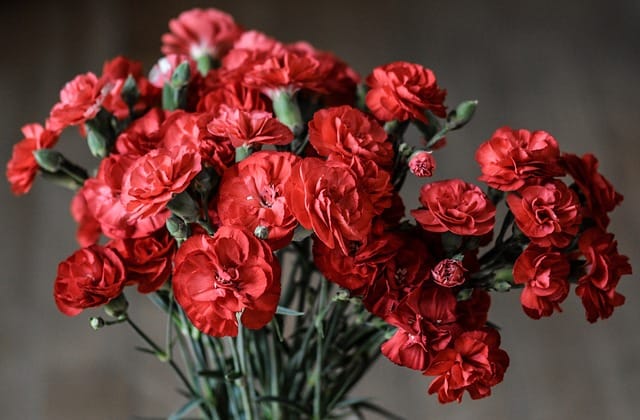How to grow Carnations
Carnations are beautiful flowers known for their vibrant colors and long-lasting blooms

In this article:
- Introduction to Carnations
- Choosing the Right Carnation Variety
- Soil Preparation and Planting
- Watering and Fertilizing Carnations
- Providing Adequate Sunlight
- Pruning and Deadheading
- Controlling Pests and Diseases
- Supporting Carnation Stems
- Protecting Carnations from Extreme Weather
- Harvesting and Displaying Carnations
- Propagation and Dividing Carnations
- Common Carnation Problems and Solutions
- Conclusion
Introduction to Carnations
Carnations are beautiful flowers known for their vibrant colors and long-lasting blooms. They are popular choices for bouquets, corsages, and arrangements due to their fragrance and wide range of colors. Growing carnations in your garden can add beauty and elegance to any landscape.
Choosing the Right Carnation Variety
When selecting carnation varieties, you need to consider factors such as flower size, color, and growth habit. Some popular carnation varieties include 'Fancy Nancy,' 'Giant Imperial,' and 'Chabaud Giants.'
Soil Preparation and Planting
Carnations thrive in well-drained, slightly alkaline soil. Prepare the soil by incorporating organic matter, such as compost or well-rotted manure, to improve fertility and drainage. Plant your carnations in a location that receives full sun for at least 6 hours a day.
Watering and Fertilizing Carnations
Carnations require regular watering to maintain proper moisture levels. Water deeply and evenly, avoiding overwatering or allowing the soil to completely dry out. Fertilize your carnations with a balanced slow-release fertilizer every 4-6 weeks during the growing season.
Providing Adequate Sunlight
Adequate sunlight is crucial for healthy carnation growth and abundant blooms. Make sure your carnations receive at least 6 hours of direct sunlight each day. If you live in a hot climate, provide some afternoon shade to prevent scorching.
Pruning and Deadheading
To promote bushy growth and continuous blooming, pruning and deadheading are essential. Remove spent flowers regularly to encourage new blooms. Additionally, pinching back the tips of the carnation stems can help promote branching and fuller growth.
Controlling Pests and Diseases
Common pests that may affect carnations include aphids, mites, and thrips. Keep your plants healthy and monitor them regularly for any signs of infestation. A gentle spray of water or non-toxic insecticidal soap can often help control these pests. Watch out for diseases such as powdery mildew or root rot and take appropriate measures to prevent or treat them.
Supporting Carnation Stems
Carnations can have fragile stems, especially if the flower gets heavy or if the plant is grown in a windy area. Use stakes or plant supports to provide extra support to the stems as they grow. This will prevent them from bending or breaking.
Protecting Carnations from Extreme Weather
Carnations can be susceptible to extreme weather conditions such as frost or excessive heat. During freezing temperatures, protect your plants with a layer of mulch or a frost cloth. In hot weather, provide shade or use a light-colored mulch to reflect sunlight and keep the soil cool.
Harvesting and Displaying Carnations
Carnations can be harvested once the buds have reached a desirable size and color. Cut the stems at a 45-degree angle just above a leaf node. Place the freshly cut flowers in a vase filled with clean water and add floral preservatives to extend their vase life. Change the water every few days to keep it fresh.
Propagation and Dividing Carnations
Carnations can be propagated through cuttings. Take 4-6 inch cuttings from healthy carnation plants and remove the lower leaves. Dip the cuttings in a rooting hormone and plant them in moist potting soil. Place the pots in a warm and brightly lit area until the cuttings establish roots. You can also divide mature carnation clumps every 3-4 years to maintain plant vigor.
Common Carnation Problems and Solutions
Carnations can face various problems such as yellowing leaves, stem rot, or bud drop. These issues can be caused by overwatering, poor drainage, or improper care. To solve these problems, ensure proper watering, improve soil drainage, and provide good air circulation around the plants. Additionally, avoid overhead watering to prevent foliar diseases.
Conclusion
Growing carnations can be a rewarding experience, allowing you to enjoy their beautiful blooms and fragrance. By following proper care techniques such as soil preparation, watering, pruning, and pest control, you can ensure healthy carnation plants that will adorn your garden with vibrant colors. With patience and attention to detail, you can create a stunning display of carnations in your own backyard.
